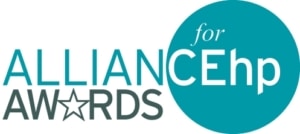Depression: A Global Epidemic and a Catalyst for Substance Abuse
An interview with Charles F. Zorumski, MD
Dr. Zorumski is the Samuel B. Guze Professor and Head of the Department of Psychiatry, and Professor of Neuroscience at Washington University School of Medicine (WUSM) in St. Louis; he is also Psychiatrist-in-Chief at Barnes-Jewish Hospital and Director of the Tavlor Family Institute for Innovative Psychiatric Research.
Interviewed by Mark Gold, MD
Depression is a major public health problem globally and for people with current and prior SUDs. Can you put into perspective the public health importance of depression? How does a person know if they have depression or are just sad? What has been the progress since John Feighner, MD and his WUSTL criteria, and since the addition of depression to the DSM?
The publication of the Feighner criteria in the early 1970s marked a major change in how psychiatric diagnoses, including depression, are made. Since then, there have been refinements to the depression criteria, but the changes in criteria have not been substantial. Depression must be viewed as a syndrome, meaning a collection of symptoms that run together over time. These include sadness (low mood) and a host of other symptoms that involve sleep, appetite, cognition and motivation, including the motivation to stay alive as manifested by suicidal ideas.
Importantly, depression is not a mono-symptomatic disorder. I would add that “depression” (even “major depression”) is extremely unlikely to be one illness, but rather it is a heterogeneous group of disorders marked by severe and persistent stress-like symptoms.
Major progress is being made in understanding the brain network dysfunction that underlies depression, with attempts to subtype depression based on neuroimaging. This work is in its infancy and is not yet ready for clinical use. Otherwise, there are no meaningful clinical biomarkers for depression that could help with diagnosis and following treatment outcomes; this is a significant limitation for psychiatry across all diagnoses.
What is the number of (and trends in) people with depression and people thinking of suicide, especially suicide attempts by young people?
Statistics from the CDC indicate that the suicide rate in the U.S. has increased over the period from 2000 to 2014. with more than 42.000 suicides per year in 2014 compared to about 32.000 or so l 5-20 years ago. This is an extremely disturbing trend that may reflect increasing societal pressures (war. economic downturn. political unrest) and increasing problems with substance use disorders (particularly opiates. but also other substances including alcohol). among other contributors. We also know that these numbers are likely an underestimate because not all suicides are coded as such; e.g .. some one-car accidents and ·accidental” drug overdoses are actually suicides. Eric Caine.MD and colleagues have written cogently about this. and the number of suicides may be 50% or so higher than what is reported. We also know that depression can occur over almost the entire human lifespan. It is now being recognized even in pre-school children as young as three. and with onset in some individuals in late life. The failure of the U.S. health care system to deal effectively with the problem of increasing suicides should be considered a major failure and a national disgrace.
What is the efficacy of antidepressants and/or therapy and non-response and partial response to treatment? How does a person know if they need to see a psychiatrist?
The goal of depression treatment is ·remission· of symptoms. meaning a state in which patients have few or no residual symptoms. Patients who have a ·response· to treatment but not remission. typically defined as a 50% reduction in symptoms in most clinical trials. remain at much higher risk for relapse compared to those who achieve remission. At least 20% and perhaps up to 33% of patients with well-characterized major depression fail to respond to adequate dose and duration trials of antidepressant treatments. including evidence-based forms of psychotherapy. Treatment failure is likely even higher in patients with co-morbid psychiatric disorders (personality disorders. anxiety disorders and substance use disorders) and chronic medical illnesses.
In our experience at Washington University in Charles (Chuck) Conway MD’s Treatment Resistant Depression Clinic. patients have failed. on average, about nine adequate antidepressant trials at the time they are evaluated in the clinic. I would add that when classifying patients as “treatment resistant,” it is important to carefully review all prior treatments to make sure the patient has had a true treatment failure, as opposed to an inadequate antidepressant trial. Failure of two or more adequate antidepressant trials should prompt more aggressive treatment. including augmentation medication strategies. ECT and, in some cases, vagus nerve stimulation. Patients and their families who recognize the symptoms outlined above, including declining performance at work or school. should consider referral to a psychiatrist. Importantly, depression is now recognized as the number one cause of disability worldwide across all medical disorders, with disability defined as an inability to work productively and/or live independently. Other more dramatic symptoms, including suicidal ideas or attempts and significant weight loss or psychotic symptoms (delusions/hallucinations), should strongly prompt psychiatric referral. For most patients. referral to the psychiatric system will be through primary care physicians who may see the patient for sleep disturbance. weight loss. fatigue. and/or complaints of cognitive dysfunction or anxiety. Hence, better training of primary care doctors in recognition and treatment of depression is critical for effective diagnosis and management of depression.
Who gets admitted to Washington University for depression? Who gets ECT and how has it improved since you started there?
The psychiatric inpatient service at Barnes-Jewish Hospital at Washington University serves a complex array of patient with severe psychiatric illnesses of all types. including depression. Because many psychiatric patients can be managed effectively as outpatients. our inpatient service typically deals with complex, refractory patients who often have severe and emergent symptoms, including psychosis, suicidality. violence and failure to function in the community. Typically, patients are admitted via our emergency department, and a high percentage of them are involuntarily admitted because of danger to self or others. Hence. our inpatients often have complex. refractory illnesses that may also be marked by treatment non-compliance and co-morbid substance use disorders. The high acuity and refractoriness of these patients. coupled with a significant number of patients with complex medical and neurological comorbidities, often requires aggressive and complex treatments. In this setting, we use ECT for a range of refractory or severe illnesses, including major depression. bipolar disorder and psychotic illnesses. including patients with severe suicidality.
ECT has changed dramatically over the past 30 years. Our inpatient service has a dedicated suite for ECT that includes a waiting area. pre-treatment evaluation area. treatment room and post-ECT recovery area, all discretely separated from each other. Major advances in ECT have taken advantage of advances in modern anesthesia. with more intensive monitoring of cardiac and respiratory function. as well as choices of anesthetics and muscle relaxants, which reflects collaboration between anesthesiologists and psychiatrists. ECT stimulators now exclusively are brief-pulse constant current devices that allow great flexibility in electrical stimulation parameters; the electrical parameters are chosen based on the type of ECT used (non-dominant hemisphere unilateral treatments. bitemporal treatments and bifrontal treatments) based on current clinical literature. All patients have seizure thresholds measured at their first treatment as a way to provide the highest efficiency and safest courses of ECT, with the lowest effective electrical dosing to minimize cognitive and other side effects. We also restrict ECT privileges to a small number of faculty members who have particular expertise in this area.
Can you describe the work you and your colleagues have done using ketamine and nitrous oxide with those non-responsive to treatment?
Despite an expanding clinical literature supporting the use of ketamine in treatment-refractory depression, we consider this treatment to be experimental and thus largely restrict its use to ongoing clinical trials.
Presently, Eric Lenze. MD and Nuri Farber, MD have an ongoing trial of longer-ketamine exposures (96· hour infusions) in an attempt to increase the duration of responses beyond a few weeks. This study involves attempts to uncover neuroimaging correlates of the treatment.
Chuck Conway, MD and Peter Nagele. MD did the first human trial of nitrous oxide inhalation for refractory depression based on prior basic science findings in our department that nitrous oxide, like ketamine. is a non-competitive inhibitor of N-methyl-D-aspartate type glutamate receptors. Their initial paper was published in Biological Psychiatry. Conway and Nagele now have ongoing trials of nitrous oxide for refractory bipolar depression and acute suicidality. as well as a neuroimaging study examining neural network correlates of the effects of nitrous in depression.
The evolution of ketamine (and perhaps nitrous oxide) is an important innovative development for psychiatry and patients with refractory depression. Nonetheless, as Chuck Conway and I discussed in an editorial in JAMA Psychiatry earlier this year, these treatments are not yet ready for broader clinical use and should be considered experimental.
Ketamine clinics seem to be opening all over the U.S. What are the APA’s guidelines on this and/or do you have any concerns?
We are very concerned about uncontrolled use of ketamine in clinical practice because of psychiatric. cognitive and medical risks. to go along with abuse potential. While there are no official guidelines about clinical use of ketamine in psychiatry. Gerard Sanacora. PhD. MD and colleagues published a set of recommendations in JAMA Psychiatry earlier this year that serve as a basis for decision making and possible use. As I mentioned. Chuck Conway and I wrote an accompanying editorial.
What are your thoughts about how ketamine works. why it works so quickly in suicidal ideation and what that might mean for antidepressants’ future?
Ketamine is clearly a non-competitive NMDA receptor antagonist. and effects on NMDA receptors are likely to contribute to its CNS effects. Based on a Nature paper published about a year ago showing that a ketamine metabolite that does not apparently inhibit NMDA receptors also has antidepressant-like effects in rodents. there is some controversy about the role of NMDA receptors. This has become even more controversial with the recent publication of a pair of letters in Nature in which Lisa Monteggia PhD’s group provided some evidence that the ketamine metabolite does inhibit NMDA receptors at higher concentrations. Added to this. there is also evidence that esketamine, the ketamine enantiomer with higher potency at NMDA receptors, is an antidepressant in humans, which supports the possible role of NMDA receptor antagonism in antidepressant actions. It is also important to note that the effects of ketamine on depression are observed with subanesthetic doses. at which ketamine produces relatively low-level antagonism of NMDA receptors in vivo; thus. effects of the unblocked NMDA receptors may be important in interpreting effects of the drug on neural function. We have written a commentary about possible mechanisms of ketamine that was recently published in Journal of Neuroscience.
How ketamine produces its rapid antidepressant effects remains uncertain, although the leading hypothesis, with experimental support in rodent models, is that ketamine produces downstream effects on brain-derived neurotrophic factor (BDNF) and other signaling pathways that result in enhancement of glutamate transmission via AMPA type glutamate receptors. This is a form of synaptic potentiation. Despite the controversy over the role of NMDA receptor antagonism, there is some agreement about the effects on AMPA transmission.
It is interesting that ketamine appears to have rapid effects on suicidal ideation. This may reflect the ability of the drug to dampen ruminations through unknown mechanisms. This is an effect that might be shared by nitrous oxide.
Addicts often complain about depression. sleep disorders and anhedonia. and these tend to persist. Kitty Dukakis has a new book and has been featured in The New York Times highlighting the importance of dual disorders and post-addiction anhedonia and depression. She was treated successfully with ECT. What are your thoughts about depression and addiction and the role of psychiatrists and psychiatric treatments?
There is a clear relationship between depression and substance use disorders across the range of abused substances. Cross-sectionally. it can be difficult to determine the time course of the two sets of disorders. In some cases. chronic and even acute drug use can result in what appears to be a full complement of depressive symptoms with. at times. severe suicidal ideas and intent. In some cases. the depressive symptoms abate as intoxication clears: in other cases. the symptoms persist even in the absence of further substance use. Of course. there are individuals in whom depression antedates substance use. All of these are complex states involving emotional. cognitive and motivational dysfunction. Thus. it is imperative for psychiatrists to be involved in the diagnosis and management of these complex cases. Importantly, depression and substance use disorders are independent risk factors for completed suicide, and this risk is increased when the two sets of disorders are combined. Again, such complex states call for the involvement of psychiatrists in the care of these patients.
Washington University has amazing depression research. new imaging initiatives, and psychiatric brain and genetic research. What work. in progress or published, do you think has the greatest potential to identify risks, prevent and/or help people with depression?
It is imperative to understand the brain network dysfunction associated with depression. This includes understanding the time course of brain changes associated with depression and how those changes relate to symptoms, outcome. subtypes of depression and predictors of treatment response.
Several of the research groups at Washington University. ranging from work in very young children to geriatric patients. have neuroimaging components in their work. This is the basis for the Center for Brain Research in Mood Disorders that is housed in our department. which includes Drs. Eric Lenze, Joan Luby, Chuck Conway and Daniel Mamah.
An equally important effort concerns early recognition of children at risk for depression and targeting therapeutic intervention to those at risk. This is a major feature of Joan Luby’s work and includes forms of therapy based on parent-child interactions.
Eric Lenze’s work on geriatric and refractory depression and anxiety focuses on finding ways to increase brain resilience to mood disorders. including the potential roles of exercise and mindfulness-based stress reduction.
Chuck Conway’s program focuses on treatment refractory depression and provides an extremely well-characterized group of individuals with high degrees of treatment refractoriness. These individuals provide a population for brain imaging and potential new treatment trials.
Finally, Daniel Mamah’s program focuses on understanding the earliest brain changes in adolescents associated with transition to psychotic illnesses, including bipolar disorder.
We are also heavily focused on better molecular and cellular understanding of factors contributing to depression and other mood disorders. This is the focus of the Taylor Family Institute for Innovative Psychiatric Research. Work in the Institute has included efforts to develop ketamine and nitrous oxide for refractory depression.
The Institute has also played a key role in the possible development of neurosteroids and oxysterols for use in neuropsychiatry. This work has been bolstered by a recent Phase 2 clinical trial for postpartum depression with early positive results.
Interested in reading more expert interviews?
VISIT RIVERMENDHEALTH.COM/ASKTHEEXPERT
RiverMendHealth.com






